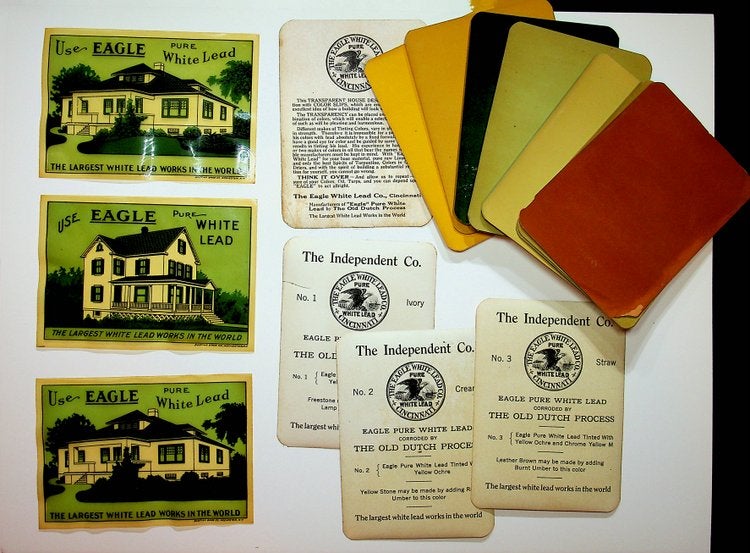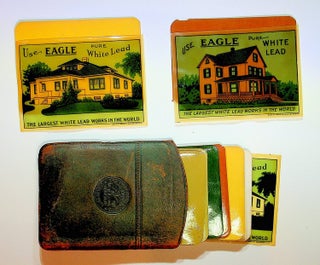Color sample set of 20 Eagle White Lead Company paints with three celluloid house designs, in the originial leather folder
Cincinnati, Ohio: The Eagle White Lead Co. [ between 1891 and 1906 ]. A set of 20 color cards, each 3x4 inches, all with rounded corners. Plus white (now off-white) advertising card with basic marketing information and plain white verso. Plus three celluloid (?) cards of similar size in shades of green with transparent sections where the color cards could be placed to show three different houses styles "painted" in different shades. With the original leather pouch embossed with the company seal. The celluloid cards have yellowed somewhat, the cards are in some cases worn or with edge tears. The leather pouch is worn. Overall though in working condition for it's intended purpose - showing off what the company's products could do to a house in need of a paint job. Very Good. [27907]
The company started in 1842 as the White Lead Company in Cincinnati, Ohio; it later became Eagle White Lead Works in the 1850s. In 1891, Eagle is bought by John B. Swift and Associations and renamed Eagle-White Lead Co. A merger with the Picher Lead Company of Joplin, Missouri, occurred in 1906, becoming Eagle-Picher Lead, which evolved into Eagle-Picher Industries, Inc., and finally EaglePicher Technologies as it is known today. The new company does many things, including manufacturing the geranium that went into the first Bell System transistors.
While these paint salesman sample sets must have been produced in some quantity, they have a low survival rate. These sample sets vary, often missing the white advertising card, sometimes with different sample numbers (we've seen as few as 12), and there is also some variation over time in the type (different home styles, sometimes interior images) and quantity of the celluloid transparencies (usually two or three). The leather pocket "grain" has changed as well. All are interesting, worthwhile examples of salesmanship in the early 20th century and what was found desirable in paints. Later examples are known by Eagle-Picher.
ITEM SOLD



